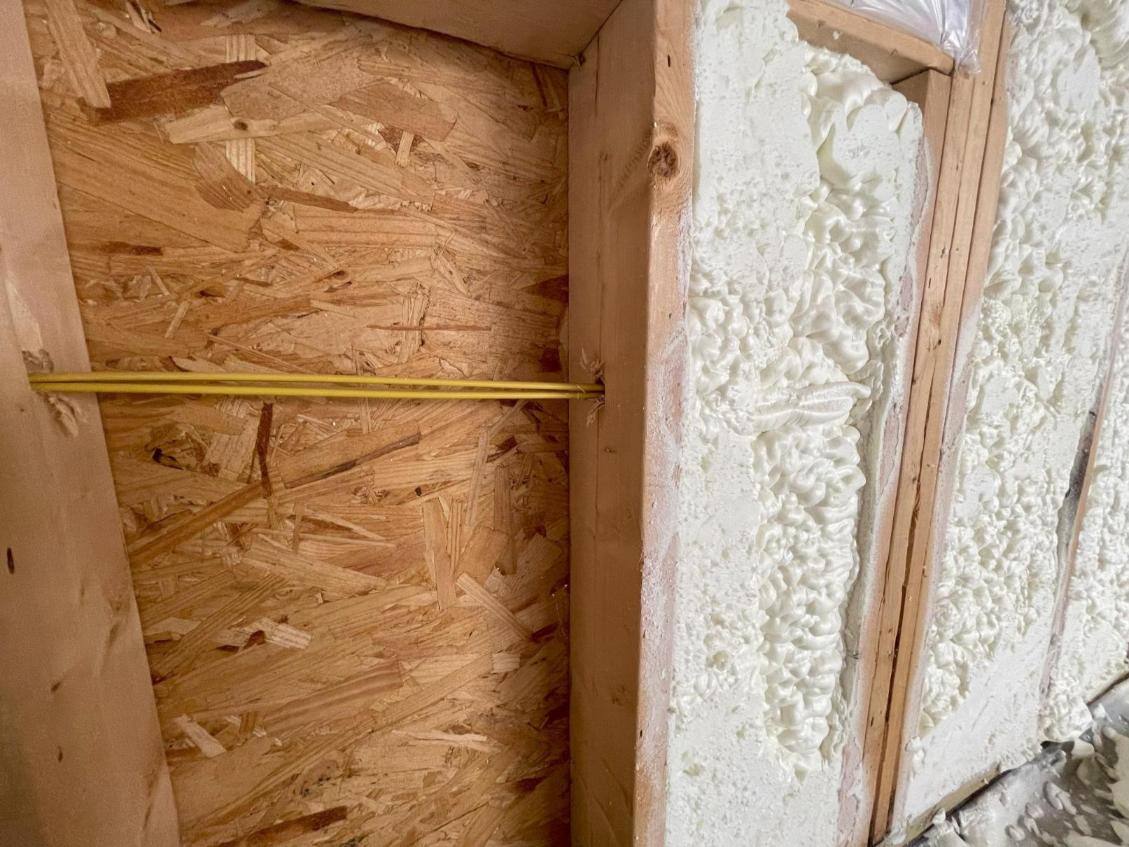Search for topics or resources
Enter your search below and hit enter or click the search icon.

One of the most common concerns we hear about installing spray foam is the placement of wiring in the home. What happens if you install spray foam over electrical wires? Is there any danger of a fire? How could you work around the foam if you needed to run a new wire?
South Central Services has insulated hundreds of new and existing homes in southern Pennsylvania with spray foam. Spray foam insulation is not harmful to electrical wiring, and will not prevent running new wires in a building.
By the end of this article, you’ll understand why spray foam doesn’t harm wires and how to run a new wire in a spray foam-insulated home.
Don't have time to read right now? Check out everything you need to know at a glance.
No matter where you are insulating, wiring is likely present. Attics, walls, basements, and crawl spaces all have the potential for wires to run through.
.jpg?width=533&height=400&name=7.8.24%20Spray%20Foam%20(T).jpg)
Spray foam insulation can be installed in your attic, exterior walls, basement, or crawl space. Interior walls also have wiring and insulation, but spray foam is not used for interior walls.
When we run into wiring in a cavity that we need to spray, we spray over the wire. Spray foam insulation is not harmful to electrical wiring due to the coating on the wires. This coating can withstand the heat and chemical reaction that creates spray foam insulation.
Encapsulating the wiring with spray foam will not cause any day-to-day problems or increase the risk of an electrical fire.
The heat of the spray foam chemical reaction does not affect high-voltage wires. However, some home security systems use lower voltage wires.
Low-voltage wires are more sensitive to heat. Since heat is a natural byproduct of the chemical reaction to create spray foam, it is unwise to spray directly against these wires.
In the case of low-voltage wires, we have three good options.
The third option makes it safe to encapsulate low voltage wires inside of spray foam. Can foam insulation is a similar product but does not generate the same amount of heat when sprayed. If we encapsulate the wire in can foam, the can foam protects the wire from the heat of the spray foam reaction later on.
In most cases, encapsulated wires must be abandoned. While spray foam will not harm the wire, the insulation will prevent you from reaccessing these wires.
If you need to move something to a new location in your home, the best approach is to run a new wire.
Sometimes, homes need new electrical receptacles. Running a new wire can feel daunting, especially with such permanent and stiff insulation as spray foam. The good news is that it is possible and quite easy to pull new wires into a spray-foamed wall.

Walls with closed cell spray foam insulation are the easiest for running new wires. Closed cell does not expand much when sprayed. In our climate zone, exterior walls receive 2 to 4 inches of closed cell spray foam. This means a gap will be between the drywall and the insulation, giving plenty of space to pull in a wire.

Walls with open cell spray foam insulation require a bit more effort, but running a new wire will not harm the insulation at all. Open cell spray foam expands significantly more than closed cell, meaning there is likely no space between the drywall and the insulation. In these cases, you can use a bit or a “fish stick” to bore a groove between the drywall and the spray foam insulation.
Two people can quickly run a new wire without ruining their insulation or drywall. You should start by cutting the receptacle hole.
One person can create the groove from the basement, while the other person waits for the bit or fish stick to deliver the wire at the receptacle hole.
As long as you stay on the face of the drywall when creating the groove, the wire will arrive at the correct location.
Many people avoid spray foam insulation due to their concerns about wiring, accessing encapsulated wires, and running new wires in their home. It can sound scary to encapsulate the vehicle that delivers your electricity.
Spray foam insulation won’t harm your wires. While you won’t be able to access encapsulated wires again, spray foam is safe to spray against your electrical wiring. You can also run new wires in your home without demolishing your insulation or drywall.
Your home’s wiring will not get in the way of installing airtight insulation.
Now that you understand why it is safe to encapsulate your electrical wiring with spray foam, your next step is to:
Disclaimer: While we strive to publish information accurate to building science, local building codes and standards supersede our recommendations.
Kilian has co-owned and operated South Central Services for 8 years. He is passionate about community involvement. In his spare time, he enjoys being with his family, playing ice hockey, and going fishing with friends.
Topics: